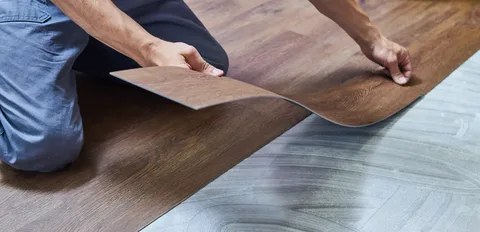Is Vinyl Flooring Really Waterproof? Here’s the Truth
Introduction
Over the past years, vinyl flooring has quickly gained traction among homeowners for its beauty and high durability against water damage. However, the question of “how” waterproof it truly is remains to be answered. Whether it can resist spilled drinks or flooding from rainstorms depends on several other factors. This article aims to inform you about the different types of vinyl flooring options out there, their resistance to water damage, and what you can do to keep them that way.
Water Resistant vs. Waterproof—What Is The Difference?
First, we need to establish the core difference between the two terms. While both are resilient, they are not interchangeable. A water-resistant floor can hold its own against routine spills, pet accidents, and even water tracked in when you bring in muddy boots. On the other hand, a truly waterproof vinyl floor means that it won’t give way to flooding or large puddles. Keeping in mind these two things gives us a better understanding of how waterproof vinyl flooring truly is.
LVP: Factors That Make It Water Resistant
In order to understand what contributes to its popularity among renovators as well as property owners, we should look into detail at all the elements that make it water-resistant.
Keep on reading to learn what helps vinyl flooring hold its own against moisture damage!
It’s Core
An SPC, or stone plastic composite, core is the most durable against moisture damage, making it the most popular choice. Made of a combination of naturally occurring limestone, polyvinyl chloride, and other miscellaneous materials, it is a dense core that is less prone to swelling.
Conversely, a WPC, or wood plastic composite, core is more flexible but also thinner. Made by combining wood fibers with PVC and other materials, it is second on the list of most popular choices for homeowners.
The Installation Method
Traditionally, a vinyl floor that can be clicked into place is much more resistant to moisture damage because of its tight seal. It also allows for easy expansions and contractions when exposed to various levels of humidity, and that makes it a solid choice for areas of the house like bathrooms and kitchens.
The Thickness
Next, the thickness of the planks also plays a part. If your vinyl planks are anywhere between 6 and 10 mm in width, your floors are more likely to resist water damage.
The Wear Layer
Next, consider the wear layer, as it will be taking the brunt of the damage. If your vinyl flooring’s wear layer is anywhere around the neighborhood of 20 to 30 mils, it will be more resilient against moisture damage.
Additional Treatments & Seals
Finally, another layer of resistance against moisture damage, vinyl flooring with waterproof coatings that feature ceramic or silicone-based layers. Some vinyl floors also come with sealed edges, making it impossible for water to seep in.
How You Can Boost Your LVP’s Resistance to Water Damage
While the above list tells us how vinyl flooring stands up against moisture damage, there are also some things that we can do to improve its performance.
Let’s take a look at some of the ways that you can keep your LVP waterproof
Proper LVP Installation and Maintenance
As we mentioned, installation matters. It’s not just about the locking mechanism, but a poorly installed or neglected vinyl floor will succumb to water damage. While the planks might be secure, if any water manages to seep in through the edges or settles underneath. Your subfloors will be compromised and, eventually, your beautiful vinyl floor will too.
DIY Or Professional Installation
While LVP with floating mechanisms is easy for DIYers to install, you do need some experience to connect them properly, leave enough space for expansion, and ensure your floor is even. Unless you know what you’re doing, leave your vinyl flooring installation to the professionals to give it a better chance of resisting moisture damage.
Prep Work And Acclimation
Before doing anything, make sure you don’t skip the prep work. Leave your floors alone for at least two days prior to installation to help them get used to the moisture levels in your house. in the meantime, ensure that the subfloors are properly installed and dry so that when you do have your LVP installed, it is stronger and less likely to get damaged.
Final Thoughts
Luxury vinyl flooring, or LVP, is celebrated for being an affordable, stylish, and durable flooring option for homeowners all over the country. Though it is waterproof, it is important to keep in mind that it is not indestructible, and there are several factors that you need to keep in mind, like its width, installation, core, and maintenance, that are going to boost its waterproofing abilities.
FAQs
Q: What kinds of finishes does LVP have?
Ans: It is a versatile flooring option, able to mimic realistic wood as well as stone
Q: Can LVP be installed over existing floors?
Ans: Yes, it can be installed over existing floors!
Q: How do I clean LVP flooring?
Ans: Regular sweeping and mopping with mild cleaning agents are enough to keep your LVP flooring clean

